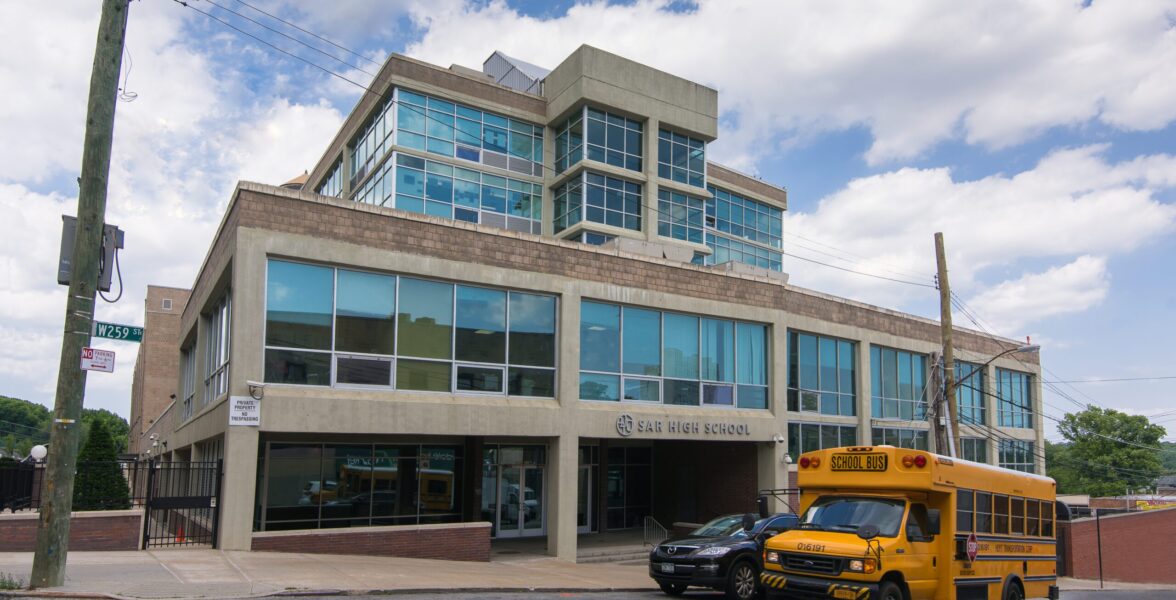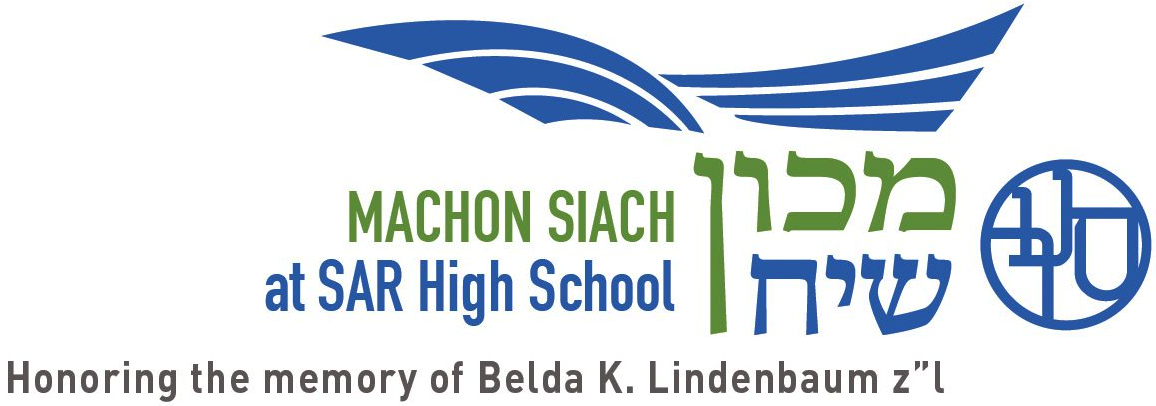
Comfortable Limits
“SAR High School is a Modern Orthodox co-educational community of learners dedicated to challenging each learner to move beyond his or her comfortable limits”
This second line of SAR High School’s mission statement has always struck me as powerful, but somewhat vague. What exactly are our “comfortable limits” and what attitudes and practices do students that “move beyond” them exhibit?
Any meaningful learning is a journey beyond a student’s self—by its very nature it is an act of expansion beyond his or her current knowledge and abilities. In high school, students moving beyond their comfortable limits usually translates into things like struggling through difficult problem sets, drafting and redrafting papers, enrolling in classes they haven’t been exposed to, and being open to new people, ideas, and opinions. But I think it can mean even more.
This year, I have the privilege of teaching both Physics and Machshevet Yisrael (Jewish Philosophy) at SAR High School. While the two fields aren’t typically associated with one another, I’ve found that they are intimately related, especially when it comes to moving beyond comfortable limits. Both subjects force students to reconsider their assumptions about the world: in physics, about the physical world, and in philosophy, about the world of ideas. This can be a challenge for students—it is hard for students to see new perspectives and even harder for them to challenge their own—but I would like to suggest the following encouraging approach.
Physics consists of two things: (1) a description of what is in the world, and (2) how those things behave. The former is called “ontology”: what exactly is it that makes up our world? We actually begin this inquiry as early as preschool in the classic Sesame Street sketch “Who are the people in your neighborhood,” where we go out to find postal carriers, bankers, and grocers. In ontology, we broaden that line of questioning to “What are the things in your universe?” Taking the Sesame Street approach, we can go out into the universe and find things like oceans, a moon, etc. Wilfrid Sellars, a 20th century philosopher, dubbed this the “Manifest Image” of the world. It consists of the things that we know about from our direct experience. It is how we grow up seeing the world, and it is the ontology that we have developed in order to survive as a species.
The problem with this naive approach to our question—the Manifest Image—is that the world as we experience it can be deceiving, and it’s not exactly right. For example, when we see a table, it looks solid all the way through, and so the Manifest Image says it is. In reality though, the table is made up of an untold number of atoms, each of which is mostly empty space (for those who remember their chemistry, this was the famous “Rutherford gold foil experiment”), and this plainly contradicts our Manifest Image of the world. Similarly, there are all sorts of things that science claims exist that humans never directly perceive. We mentioned atoms, but forces, radiation, and electric currents would all fall into the same category. So it seems that the “Scientific Image” (as opposed to the Manifest Image) of the world tells us that the “people in our neighborhood” are much stranger than we first thought. In particular, it claims that our world is replete with imperceptible entities that exist among us.
The purpose of scientific study science then (and, I suppose, my purpose as a physics teacher) is to modify a student’s Manifest Image of the world with the Scientific Image: to tweak each student’s prior conception of the universe into a more complicated, less intuitive, and very mysterious one. But why bother? They can operate just fine within the dalet amot (four cubits) of their Manifest Image. In fact, it’s probably more practical than the arcane chalkboard world depicted by the Scientific Image. Why should students be interested in twisting their minds to comprehend the strange objects postulated by science teachers when generations of people before them got along just fine without knowledge of electrons, quantum wave functions, or electric fields?
For many, the answer is that the Scientific Image has proven to be incredibly successful, despite its lack of intuitive appeal: much of electrical technology and modern medicine is thanks to the depth and intricacy of the Scientific Image. Personally, I think something much deeper is going on (after all, we do not teach science just in case a student becomes a doctor, the same way we do not teach ancient history just in case a student becomes a historian)—and it gets to the core of what SAR’s mission statement is about. To explain, I turn to one of my early Machshevet Yisrael lesson plans from the 1999 classic movie, The Matrix.
Neo, a reclusive computer hacker, is told that everything he has ever known is a lie. He is living in a dream world that was built to hide the fact that he is a slave. Neo is offered two pills. A blue pill will allow him to forget what he has learned. With its ingestion, he will live the rest of his life in blissful ignorance of the unfortunate reality of the world, and it won’t make the slightest practical difference that he is a slave. He will only ever experience his dream world, as he has for his entire life until now. However, if Neo takes a certain red pill, he can wake up. He can, for the first time in his life, experience the real world, but as a miserable slave in perpetual war with robot overlords.
Why does Neo take the red pill? Not for money or any other practical reason, but for a deeply spiritual one. Neo isn’t satisfied with the world as it is given to him. He has always sensed an emptiness to his life and he desires to live an exalted existence. He could never articulate precisely what it is he has been searching for his entire life, but now that he has learned about The Matrix, Neo knows that he has found it.
The good news is that while The Matrix’s world is deeply upsetting, the world that we offer students in our classes is sublime and exciting. That’s the power of the “Scientific Image.” Each time we expose students to part of that less comfortable picture of the world, we lift one more veil off of their reality. Thus, students of science are given the opportunity to lead richer, more informed, and more truthful lives with a greater appreciation of the world and their place in it. It’s less about preparing them for careers and more about preparing them for life.
Brett Stephens expresses this well in his New York Times article entitled “Useless Knowledge Begets New Horizons” (thank you to Ms. Rebecca Wolf for sharing this with the SAR faculty):
in being the kind of society that [pursues science with no immediate application] we also discover the highest use for useless knowledge: Not that it may someday have some life-saving application on earth, though it might, but that it has a soul-saving application in the here and now.
And what about Machshevet Yisrael? Students enter with their “manifest” notions of faith in God, commandments, and morality. It can be profoundly threatening for them to learn about all the ways in which their thinking may be contested, or even be internally inconsistent. So why do it? Why don’t our students take the blue pill, and live with the peace of mind that an unreflective approach to Judaism offers? Because we want them to build a more gratifying and honest worldview. The red pill is harder, but it is deeper, and we have a faith that it ultimately strengthens religiosity.
My suggestion is that “challenging each learner to move beyond his or her comfortable limits” is not only a fundamental part of learning but an effective and powerful tool that we give our students to set them up for meaningful lives. It’s an attitude toward the human experience and a disposition toward deepening it. It is a yearning for divine truth אֶת־פָּנֶ֖יךָ ה’ אֲבַקֵּֽשׁ (Tehillim 27).
To me, the message of SAR’s curriculum is a reflection of its mission: take the red pill. Once we do, there is no turning back. We cannot unlearn things, and the enlightened thinker is rarely complacent with reverting to an unreflective existence. Especially for young students, for whom learning is “ink on new parchment” (Pirkei Avot), the Scientific Image is not easily erased. In this way, our classes have the power to take root deeply in the minds and souls of our students.


